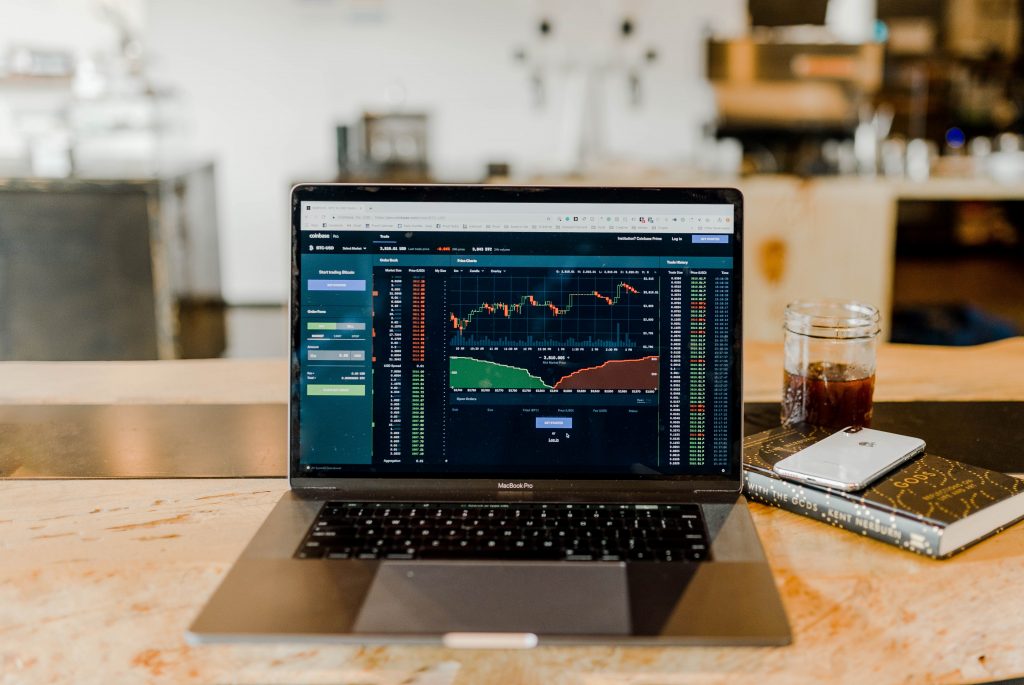The views and opinions expressed in this article are those of the guest blogger and do not necessarily reflect the official policy or position of Bondora.

In 2013 I started a Danish blog about personal finance and financial independence.
I planned to reach early retirement, and I used the blog as a means to share what I learned and to sustain our family’s motivation to live frugally. After a while, I realized that financial independence would take decades despite the optimism I read online. But I also realized that by merely minimizing our expenses, we had been able to reach semi-retirement; I can now support my family off a small income from doing what I love and working when I want.

While working on the blog, I developed an interest in investing and P2P lending in particular. Bondora was the first platform I signed up to, and in 2016 I invested a small amount just to see what it was all about.
My start in P2P Lending
I liked the concept—and the steady returns. So, I signed up for several other platforms and started researching the concept more thoroughly. In 2016, P2P lending was still an unknown concept to most people; the tax rules were unclear and transferring money abroad was uncommon. Over time, I realized that others had started to notice this new asset class and that many were asking the same questions. That’s when I decided to publish my findings on the blog.
I eventually published the first Danish book on the subject, summarizing all the information in an easily digestible format.
Why I invest in P2P Lending
First and foremost, I am fascinated by the idea of it! Lending as an investment concept used to be for extremely wealthy individuals and institutional investors only. Sure, you could buy bonds if you had the €100k minimum, or you could buy a bond ETF, but that was about it.
Today, lending is available to anyone with a few coins to spare. That means ordinary people are now able to do what the wealthiest among us have been doing for generations. To have that opportunity open up to the general public is incredible.
If set up correctly and with due diligence, P2P lending can be a solid source of passive income: Invest once or use automatic monthly investments, then do nothing besides withdrawing your returns when and if needed. There may be losses, but in a conservative portfolio, those should be more than covered by the interests received.

As long as most lenders pay their debt, P2P lending can also be a stable source of income. By comparison, the stock market is highly volatile. One month it’s up 30%, the next month it’s down by the same percentage. Thousands of factors influence the stock prices, including what would be considered pure market noise.
Historically and on average, stocks have provided a very decent annual return (around 7% – 10%) depending on how and what we’re measuring. But such a volatile return is not a stable source of income.
Sure, you can withdraw significantly less than the market average and thereby decrease the probability of running out of money long-term. Or you can invest in solid dividend stocks. That, however, requires you to invest considerably more, relative to your actual long-term returns.
In spite of this, stock investment shouldn’t be discounted at all. I follow both of those strategies as part of my portfolio, and stocks do make up a much larger part of it. But neither has been as stable as my interest income from P2P lending.
The scandals and the virus
Most people would agree that 2020 is the weirdest year in living memory, and the P2P market is not exempt from it. During the first quarter, three platforms turned out (in all likelihood) to be scams. The news was filled with headlines reading: fake loan originators, platforms shut down without a trace, and millions of euros lost.
The year for P2P didn’t start off too great.
Then COVID-19 happened. Unemployment is up, small and large businesses are struggling to survive, with several already going bankrupt. Both unemployment and bankruptcies have led to increased loan defaults. On top of that, many countries have implemented payment holidays, which legally allows borrowers to postpone their payments.
The year wasn’t looking too great for investors, either.
The bright side
There’s a positive side to all of this, though. 2018 and 2019 have been characterized by intense optimism regarding P2P lending. Investors saw great profit, and new platforms emerged on a monthly basis.
A popular investing strategy seemed to be: Choose the platform that promises the highest returns, the lowest risk, and the highest liquidity—without much consideration of the validity of these claims.
A surprise was bound to happen.
We learned that “the trees don’t grow into the sky”, as we say in Denmark. And now, as a result, we have a lot more data related to the risk of P2P lending.
One reason why I have been reluctant to increase my holding in P2P was the fact that we didn’t really know which risks would be most likely to affect us. With stocks and bonds, there’s fairly solid historical data. But as P2P is a very new concept, it’s much harder to determine the most likely risk factors.
Today I believe we have a much better impression of the risks that are most likely to affect our returns: fraud and financial crises. While other factors are not insignificant and things may change in the future, I would keep these two on the top of my list of things to be aware of.
The entertainment value of 2020
During these tumultuous months, I must admit, I have been somewhat entertained. Bear in mind; I have absolute sympathy with those who have lost significant amounts of money to fraudulent platforms. Many have lost tens of thousands of euros, and some may never recover from their losses. These kinds of illegal actions must have consequences, and I’m happy to see that investors are initiating class action lawsuits against the fake platforms.
That being said, the comments and the gallows humor on social media have been entertaining. The intrigues caused by one emerging blogger in particular, has provided a fascinating insight into the sociology of P2P investors. This dark humor on social media probably originated in a cynicism that was more or less absent until early 2020. One could say that the hyper-optimism has evaporated and made space for a much-needed critical approach to investing in P2P, as well as any other investment scheme.
I also noticed a very significant shift in both the activity level and the behavior on social media. Some investors talked about leaving P2P for good, and the mood was significantly more negative than before. And I noticed a steep decline in new members to my own Facebook group, ‘Crowdlending Danmark’, and a much lower level of posting activity.
P2P going forward
However, I for one think the future looks brighter. It seems that the worst is behind us; Investor activity is increasing, we haven’t seen new scandals for a while, and macroeconomic activity is starting to grow again.
Unless we see yet another lockdown, I think we could be back to more or less normal activity soon. Hopefully, this time with more realistic expectations and more cautious investors.
Because we understand the risks better, and we have a better understanding of how P2P lending can perform during a financial decline, I intend to invest much more than I have done so far.
I’m not saying that what we learned during the recent six months allows us to predict all future challenges, but I do believe we are much better equipped than we previously were.
Invest what you can afford to lose
The main takeaway is, as always, invest what you can afford to lose. In other words, don’t invest borrowed money or money that you will need in the future. Only invest money you can live without, even if you lost it all.
That way, you will laugh rather than cry if something doesn’t go as planned. Like when I invested a significant sum in a penny stock and lost over 50%. It wasn’t great, but I was able to joke about it.
When you invest your money in something, write it off in your mind as gone. That’ll bring you peace of mind as you can’t lose something you don’t have.
Be careful
As always, if something sounds too good to be true, it probably is. 25% interest rates with buyback guarantee and instant withdrawal is not realistic.
Also, diversify your portfolio. Choose a few reliable platforms and consider spreading your funds geographically and across different types of loans. And don’t invest it all in P2P loans. Maintain a broad portfolio of stocks, bonds, and other assets. That way, you’ll be less exposed to localized events.
Remember, many bloggers are incentivized to make recommendations about platforms, so you shouldn’t rely only on their experience in making your investment decisions. In the end, where you decide to invest should be your choice.
So read up, but be cautious, and if in doubt, consult an expert.